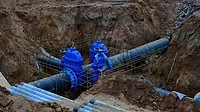Plumbing Talking Points | David Dexter
Bringing modern plumbing into historical buildings
Observing plumbing systems from around the world.

Edinburgh Castle. Image courtesy of David Dexter
As I set down to work on this article, I have recently returned from a land tour of Scotland and Ireland with my wife. It allows one the opportunity to enjoy Scotch and Irish whiskeys. But it also gives me the opportunity to engage in my profession of plumbing engineering, much to my wife’s dismay. We arrived in Edinburgh, Scotland, and spent a couple of days in the city. One of the sites that we visited was the Edinburgh Castle.
Edinburgh Castle, in Edinburgh, Scotland is historic. It was constructed on Castle Rock, a place that has been occupied by humans since at least the Iron Age. There has been a castle on the rock since the reign of Malcolm III in the 11th century. The castle continued to be a royal residence until 1633. The castle’s residential role declined in the 15th century and by the 17th century, it was principally used as a military garrison.
As I always do, my mind began to wonder how these ancient structures addressed the need for sanitary facilities. While the term plumbing has been around for centuries, indoor plumbing was not available in ancient times. The civilized method of removal of human byproducts was the “chamber pot,” a bedroom vessel for urination and defecation; which arrived in the in the 18th century. So we can surmise that these ancient facilities made use of the “outhouse or privy.”
But, over the centuries, indoor plumbing has evolved into what we call modern plumbing. However, along with that development, there have been many variations. As plumbing began to invade the older buildings in Scotland and Ireland, as well as other parts of the old world, it became a question of how to get plumbing piping into the existing structure without harming or destroying the supporting members of the structure or being respectful to the historical nature of the building. So, the logical approach became to place the piping on the exterior of the structure and keep the fixtures near those exterior walls.

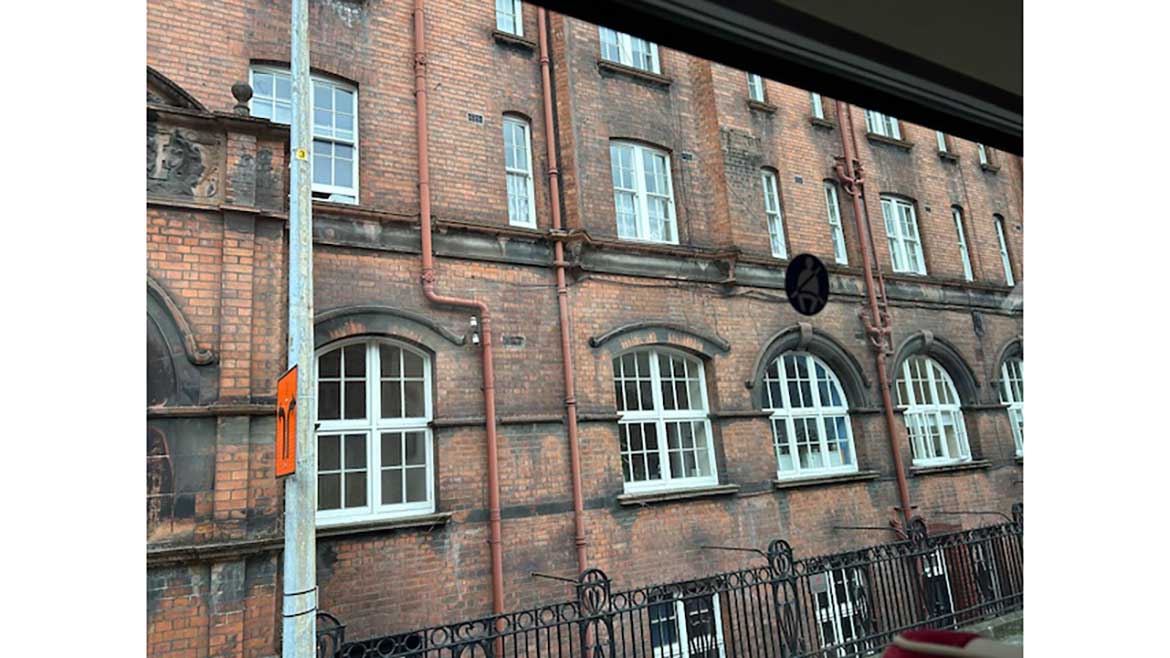
Piping mounted to the exterior walls.Images courtesy of David Dexter
As you can see from the above photographs, the piping is mounted to the exterior walls. This allowed the occupants to gain access to indoor plumbing without emptying the chamber pot onto the street or ground below from the elevated window. Yes, that was a practice in many places around the globe until relatively recent history. And in some spots, where sanitary systems do not exist or are limited in access the practice of chamber pots and privies still exists.
While the concept of mounting plumbing piping on the exterior of the building initially offered the residents access to sanitary systems, it had its drawbacks. It was not aesthetically pleasing to the eye (an architectural term) and, in colder climates, freezing of the waste could occur in the piping and block further flow.
But this approach allowed for century-old buildings to be modernized with indoor plumbing and improve the sanitary conditions of the neighborhood, as the world began to realize the connection between disease and sanitation. This was a great step forward as civilization moved forward into today’s modern plumbing systems.
These efforts have led to the development of modern codes and standards with the intent of protecting public health, safety and welfare. And, while one would hope that these codes and standards had their basis in science, physics and engineering — initially that was not the case. Many of the early approaches were developed by trial and error. Hence, I used to hear, “This is how my grandfather and father did it, so it must be correct.” Nice idea, but modern plumbing systems must be based on repeatable and verifiable facts that can be proved through engineering, science and physics.
Codes and standards are living documents, continually changing as new discoveries are made and, we in the profession learn more about how these sanitary systems function within the laws of physics, science and engineering. Codes and standards differ around the globe as different “experts” interrupt the laws of science, physics and engineering. But the reality is that these laws of science, physics and engineering do not change simply because the location or times change. Yes, environmental factors may influence how one applies these laws. But the laws themselves do not change. And, while the profession has come a long way, we will continue to learn more as the profession continues to grow and develop.
So, let me continue, by showing some examples of plumbing systems installed in older existing buildings. These systems may have improved the sanitary conditions within a given structure, but may not conform to the codes as we in the United States seem to understand them, the rules between the competing national codes.
I will begin with a fixture that seems to be disappearing within the United States; the floor set urinal or urinal bank.

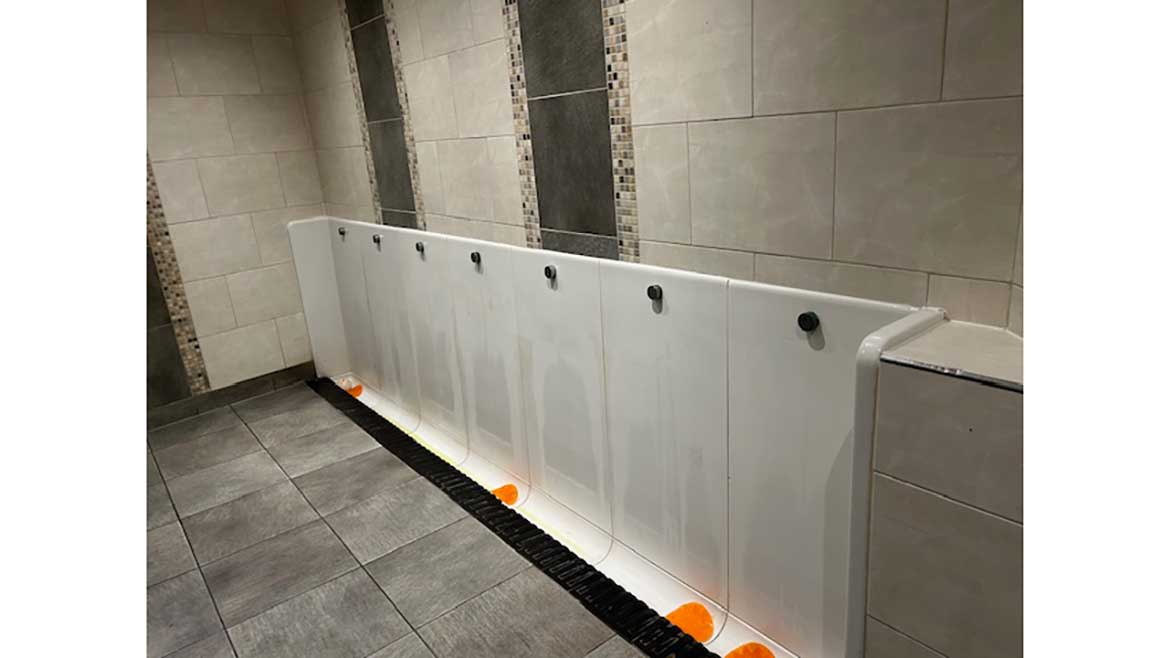
Urinal banks are not uncommon in Scotland and Ireland. Images courtesy of David Dexter
These two photographs were taken in different locations, but it was not uncommon to find them throughout Scotland and Ireland. While one does not enjoy the “modesty” shield between users, these fixtures are hard for a male user to miss hitting the target and also can act as a floor drain. This allows for better clean-up of the restroom floor. And, while the United States has moved away from the floor set urinal, these seemed to work well. The restrooms I visited seemed clean and did not have any unpleasant odors normally associated with urinals that are not flushed on a regular basis.
It was interesting to see the different installations and how they varied from what might be expected in the United States. The photographs below show a restroom in one of the many restaurants and adult beverage establishments that I traveled through.


Hand sink or lavatory mounted to a bourbon barrel. Images courtesy of David Dexter
The “Hand Sink or Lavatory” was of a modern design along with the faucet. I found it interesting to be mounted on a vanity that looked like an old bourbon barrel. If you look closely, one can see the water closet vent pipe routed along the wall to the right of the water closet as you face it. You can also see that the water closet is flushed by a wall-mounted flush tank. If you look closely in the corner to the right of the water closet, as you face it, the pull chain for the flush tank is there. It was a clean and usable restroom.
The next series of photographs show various installations of urinals, water closets and lavatories.
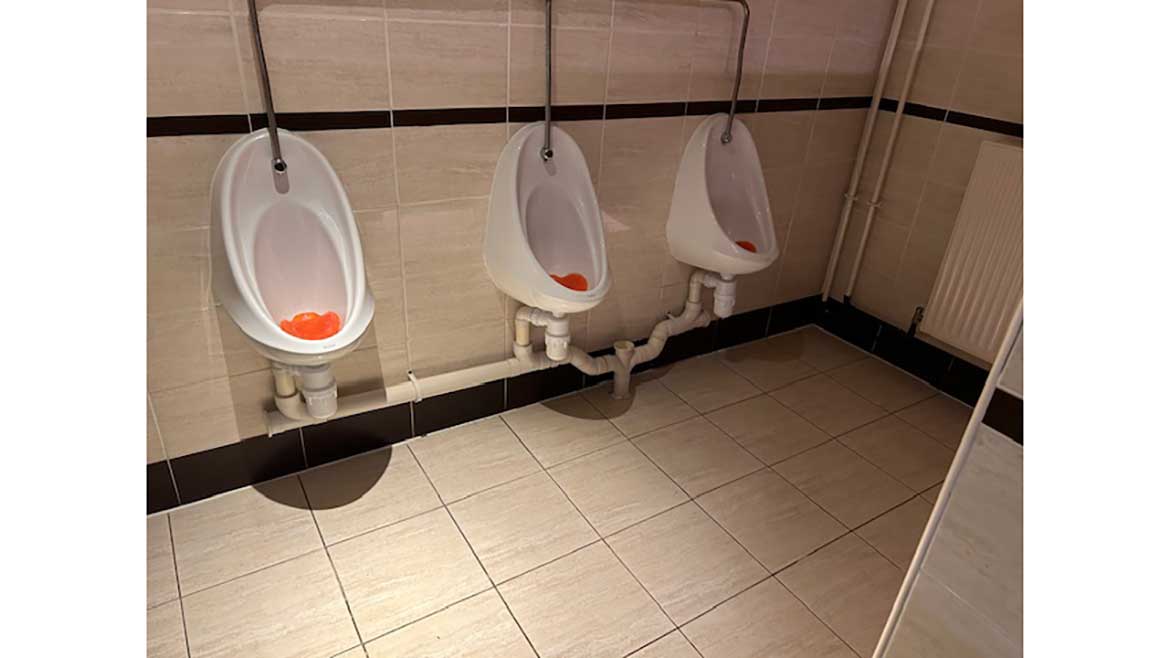
While a directional fitting would be expected by code; this arrangement seems to work. Image courtesy of David Dexter
I found this arrangement interesting. If you look closely, they use what I would call a drum trap on the fixture with the trap wasting vertically into the branch line. The tie in is made with a sanitary tee on its back. Generally, the code prohibits such an arrangement. A sanitary tee on its back does not give much directional flow to the waste. The waste basically drops vertically into the horizontal drain. These allow the waste to “splash” into the horizontal line and, at least temporarily flow in both directions before drain in accordance with the slope of the pipe. Additionally, I did not see any indication of a vent on the exposed portion of the system. However, there was no noticeable odor from the system. And, while directional fitting would be expected by code; this arrangement seems to work.
So let us think about this just a little. While the waste does “splash” into the horizontal branch; how much volume of urine and water is really flowing from the urinal with each use? So, does it really matter that the waste could temporarily flow in both directions? Ultimately, the waste will flow through the drain line to its point of discharge. As for the vent, the line is 2-inches for what would be an 1 1/2-inch waste. One could consider this to be a combination waste and vent, depending on how the rest of the system is designed.
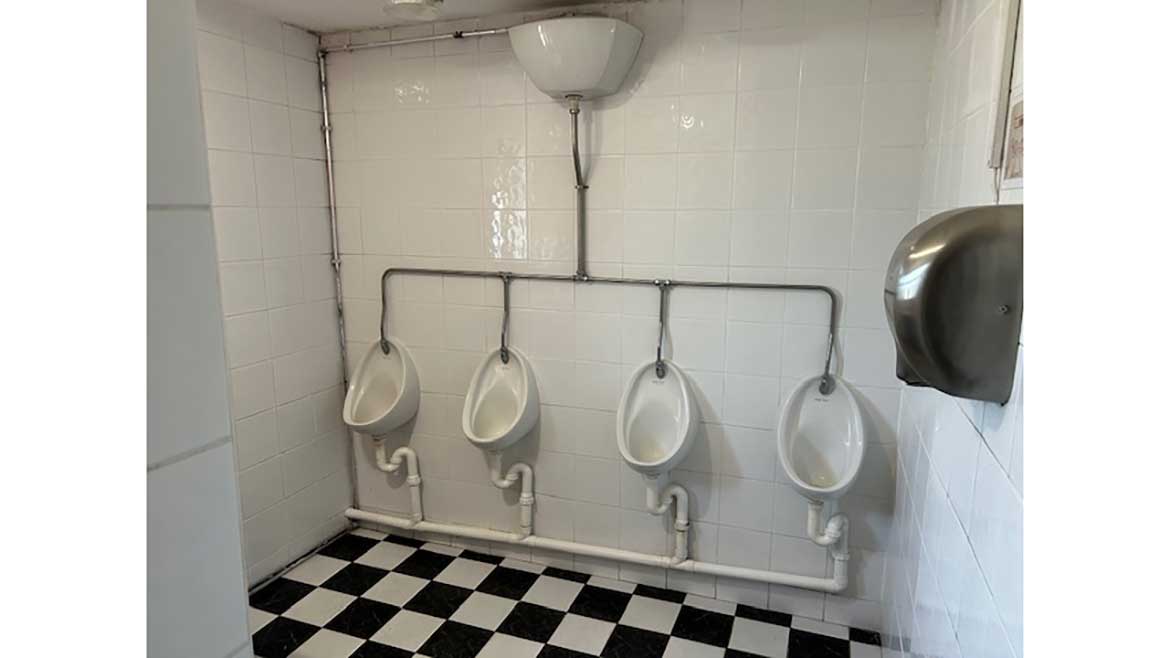
A similar “S” trap installation. Image courtesy of David Dexter
This installation is similar, except that they use what I would call an “S” trap, which is generally prohibited by code. They also use sanitary tees on their back as described above. Again, there was no noticeable odor in the room. So, is there really an issue in using the sanitary tee on its back as described above?
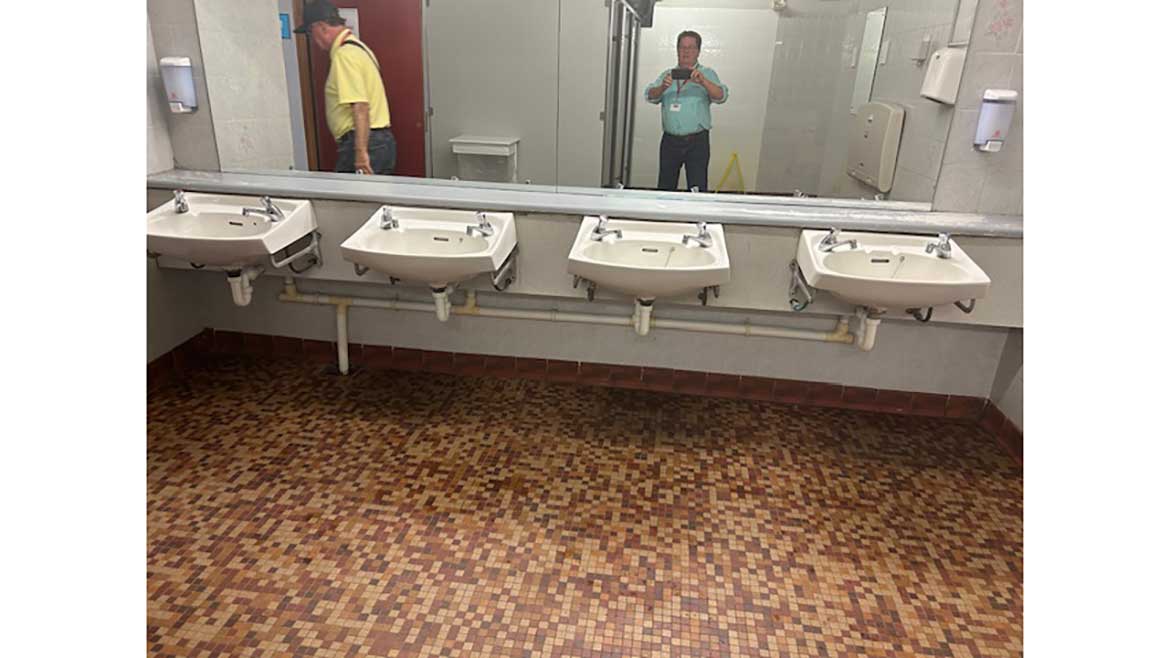
This lavatory bank uses a sanitary tee, which results in flow in both directions. Images courtesy of David Dexter
In this case, we are looking at a bank of lavatories. They use a P-trap with an arm out that drops vertically into the horizontal waste. Again they use the sanitary tee on its back; which results in flow in both directions as discussed above. But, if you look closely at the tie-in between the vertical waste and the horizontal waste from the lavatories, they also used a sanitary tee. In this case, the waste from the left lavatory must flow past the directional area of the tee before dropping down into the vertical. Additionally, there was no visible vent to the system. As the waste was 2 inches, I suspect that they were using a combination waste and vent system to serve the bank of lavatories. I did notice that they provided cleanouts at both ends of the horizontal run. And, by the way, the gentlemen leaving the restroom had no idea I was taking a photograph.


A half bath in another restuarant. Images courtesy of David Dexter
This was a half-bath in another restaurant. What I observed was a drum-style trap on the lavatory with its waste dropping vertically into the horizontal drain. There was no observable vent on the waste line. And in this case, the waste was 1 1/2 inches not 2 inches, although it does appear to increase to 2 inches near the water closet. And notice the flush handle for the water closet to the right side of the fixture as you face it. Not sure if this served a flush tank in the wall or a flush valve. Given how it flushed and the volume of water, I suspect it was a flush tank. Again, the restroom seemed clean and had no noticeable odor. Given that the volume of water discharged during hand washing and the residual water that drains into the trap upon stopping water flow, would this be a problem?
I will leave with this last example of an interesting waste systems.
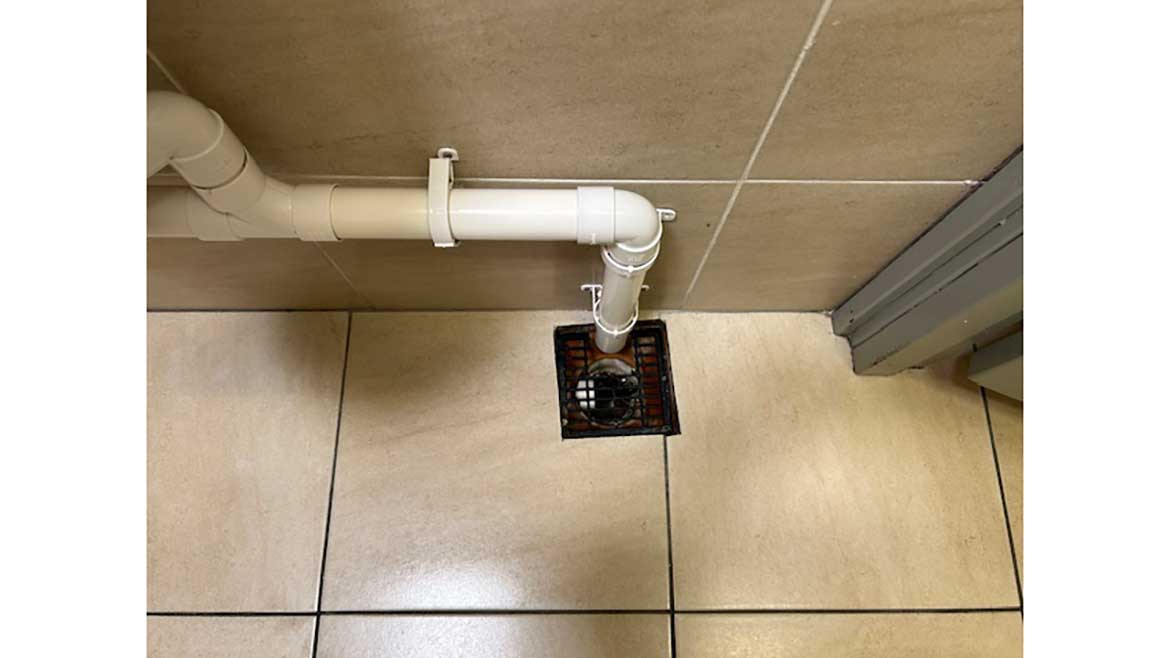
The discharge from a urinal bank. Image courtesy of David Dexter
This was the discharge from a bank of urinals. As it appears to be wasting to a floor drain via an air gap, no vent was needed. While I found this interesting, the room was clean and without any noticeable odor. There must have been sufficient urine and water flow to dilute or clear the urine from the systems and the floor drain trap. No sure I would consider this sanitary, but it was what it was.
One never knows what one will find when observing plumbing systems outside of the United States. But then I have seen some strange installation in the states as well.
Looking for a reprint of this article?
From high-res PDFs to custom plaques, order your copy today!







